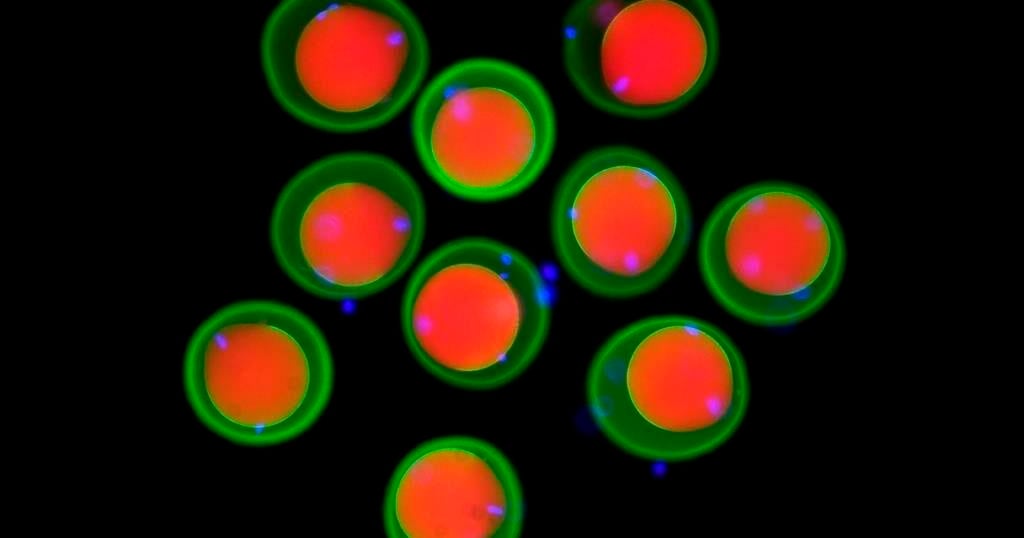Article content
It has been called life support of the last resort, and during the pandemic ECMO, or extracorporeal membrane oxygenation, has helped pull some critically ill patients back from the brink of death.

A new study by Ottawa researchers found that survivors of ECMO had a 24 per cent higher rate of mental health diagnoses after discharge compared to other ICU survivors.
It has been called life support of the last resort, and during the pandemic ECMO, or extracorporeal membrane oxygenation, has helped pull some critically ill patients back from the brink of death.
But treatment with the advanced form of life support appears to come at a cost for some patients, according to a new study by Ottawa researchers.
The study, published in JAMA this week, found that survivors of ECMO had a 24 per cent higher rate of mental health diagnoses after discharge compared to other ICU survivors.
“We already knew that ICU survivors can suffer mental health impacts from the trauma of invasive treatments, living with new physical limitations and dealing with long recovery times,” said lead author Dr. Shannon Fernando, a critical care physician at Lakeridge Health and postdoctoral fellow at The Ottawa Hospital and the University of Ottawa.
“We suspected ECMO survivors would be at greater risk of mental health impacts because they are sedated and ventilated for longer and often face a more challenging recovery. But we didn’t have clear data until now.”
ECMO, which temporarily replaces the heart and lungs of patients suffering from heart or respiratory failure, is used at five centres in Ontario, including the University of Ottawa Heart Institute.
The timing of the research is particularly relevant, say researchers, because use of ECMO grew worldwide during the COVID-19 pandemic to address record numbers of patients with severe respiratory failure. At one point, Ontario had twice as many patients on ECMO as it did pre-pandemic. It has typically been used infrequently because of limits on who qualifies and would benefit from use.
“We suddenly have a lot more ECMO survivors because of COVID-19,” said Dr. Kwadwo Kyeremanteng, co-senior author and scientist and critical care doctor at The Ottawa Hospital. “We need to make sure they have the mental health support they need to recover and survive.”

Because it is so invasive, ECMO is generally used on younger patients. About 50 to 65 per cent of those who receive the treatment survive and most are alive five years later, said Fernando.
The researchers from The Ottawa Hospital, the Institut du Savoir Montfort, ICES and the University of Ottawa studied health records from all ICU survivors in Ontario between April 2010 and March 2020. They matched 642 ECMO survivors with 3,820 ICU survivors who had similar characteristics, including age, sex, mental health history severity of illness and length of stay.
Thirty seven per cent of the ECMO survivors were diagnosed with a new mental health condition, such as depression, anxiety and traumatic disorders, a 24 per cent higher rate of new mental health diagnoses than the other ICU survivors.
Fernando led earlier research that found survivors of ICU are at higher risk of suicide and self harm after discharge. He said further heightened suicide and self-harm risk was not seen in the study on ECMO patients, but the research calls for a greater focus on the mental health of patients discharged from ICU and especially those who received ECMO treatment.
“Patients will need help long after they leave the ICU.”
Fernando said he has cared for patients recovering after receiving ECMO treatment. Patients would frequently describe nightmares and recurrent thoughts that were in keeping with post-traumatic stress disorders.

“It became clear it was exceedingly common.”
Knowing that can help to reassure patients, said co-senior author Dr. Peter Tanuseputro, physician-scientist at The Ottawa Hospital and ECES and investigator at the Bruyère Research Institute.
“As care providers, we can tell our patients that its common to struggle with your mental health after an ICU admission. ICU survivors need to realize that they often face months or years of recovery and families and healthcare providers need to support them.”
The full study can be found here.
For more health news and content around diseases, conditions, wellness, healthy living, drugs, treatments and more, head to Healthing.ca – a member of the Postmedia Network.

MILWAUKEE (AP) — Whooping cough is at its highest level in a decade for this time of year, U.S. health officials reported Thursday.
There have been 18,506 cases of whooping cough reported so far, the Centers for Disease Control and Prevention said. That’s the most at this point in the year since 2014, when cases topped 21,800.
The increase is not unexpected — whooping cough peaks every three to five years, health experts said. And the numbers indicate a return to levels before the coronavirus pandemic, when whooping cough and other contagious illnesses plummeted.
Still, the tally has some state health officials concerned, including those in Wisconsin, where there have been about 1,000 cases so far this year, compared to a total of 51 last year.
Nationwide, CDC has reported that kindergarten vaccination rates dipped last year and vaccine exemptions are at an all-time high. Thursday, it released state figures, showing that about 86% of kindergartners in Wisconsin got the whooping cough vaccine, compared to more than 92% nationally.
Whooping cough, also called pertussis, usually starts out like a cold, with a runny nose and other common symptoms, before turning into a prolonged cough. It is treated with antibiotics. Whooping cough used to be very common until a vaccine was introduced in the 1950s, which is now part of routine childhood vaccinations. It is in a shot along with tetanus and diphtheria vaccines. The combo shot is recommended for adults every 10 years.
“They used to call it the 100-day cough because it literally lasts for 100 days,” said Joyce Knestrick, a family nurse practitioner in Wheeling, West Virginia.
Whooping cough is usually seen mostly in infants and young children, who can develop serious complications. That’s why the vaccine is recommended during pregnancy, to pass along protection to the newborn, and for those who spend a lot of time with infants.
But public health workers say outbreaks this year are hitting older kids and teens. In Pennsylvania, most outbreaks have been in middle school, high school and college settings, an official said. Nearly all the cases in Douglas County, Nebraska, are schoolkids and teens, said Justin Frederick, deputy director of the health department.
That includes his own teenage daughter.
“It’s a horrible disease. She still wakes up — after being treated with her antibiotics — in a panic because she’s coughing so much she can’t breathe,” he said.
It’s important to get tested and treated with antibiotics early, said Dr. Kris Bryant, who specializes in pediatric infectious diseases at Norton Children’s in Louisville, Kentucky. People exposed to the bacteria can also take antibiotics to stop the spread.
“Pertussis is worth preventing,” Bryant said. “The good news is that we have safe and effective vaccines.”
___
AP data journalist Kasturi Pananjady contributed to this report.
___
The Associated Press Health and Science Department receives support from the Robert Wood Johnson Foundation. The AP is solely responsible for all content.
The Canadian Press. All rights reserved.

How a sperm and egg fuse together has long been a mystery.
New research by scientists in Austria provides tantalizing clues, showing fertilization works like a lock and key across the animal kingdom, from fish to people.
“We discovered this mechanism that’s really fundamental across all vertebrates as far as we can tell,” said co-author Andrea Pauli at the Research Institute of Molecular Pathology in Vienna.
The team found that three proteins on the sperm join to form a sort of key that unlocks the egg, allowing the sperm to attach. Their findings, drawn from studies in zebrafish, mice, and human cells, show how this process has persisted over millions of years of evolution. Results were published Thursday in the journal Cell.
Scientists had previously known about two proteins, one on the surface of the sperm and another on the egg’s membrane. Working with international collaborators, Pauli’s lab used Google DeepMind’s artificial intelligence tool AlphaFold — whose developers were awarded a Nobel Prize earlier this month — to help them identify a new protein that allows the first molecular connection between sperm and egg. They also demonstrated how it functions in living things.
It wasn’t previously known how the proteins “worked together as a team in order to allow sperm and egg to recognize each other,” Pauli said.
Scientists still don’t know how the sperm actually gets inside the egg after it attaches and hope to delve into that next.
Eventually, Pauli said, such work could help other scientists understand infertility better or develop new birth control methods.
The work provides targets for the development of male contraceptives in particular, said David Greenstein, a genetics and cell biology expert at the University of Minnesota who was not involved in the study.
The latest study “also underscores the importance of this year’s Nobel Prize in chemistry,” he said in an email.
___
The Associated Press Health and Science Department receives support from the Howard Hughes Medical Institute’s Science and Educational Media Group. The AP is solely responsible for all content.
The Canadian Press. All rights reserved.


Product Name: Turn Your Wife Into Your Personal Sex Kitten
All orders are protected by SSL encryption – the highest industry standard for online security from trusted vendors.

Turn Your Wife Into Your Personal Sex Kitten is backed with a 60 Day No Questions Asked Money Back Guarantee. If within the first 60 days of receipt you are not satisfied with Wake Up Lean™, you can request a refund by sending an email to the address given inside the product and we will immediately refund your entire purchase price, with no questions asked.


Freeland says she is ‘absolutely confident’ Liberal MPs still support Trudeau |


Tobacco victims hail ‘historic’ $32.5-billion deal |


‘Hateful and mean’: LGBTQ+ advocates slam Sask. Party’s proposed change room policy


The NDP, B.C. Conservative leaders vie for votes ahead of Saturday’s election


Where will B.C.’s election be won or lost? Here are five bellwether ridings to watch


Fearing demolition, Montreal skateboarders rally to protect DIY skatepark from city


B.C. voters face a once-unthinkable election choice, after stunning rise of Rustad


Voters head to the polls today in Halifax and other Nova Scotia municipalities